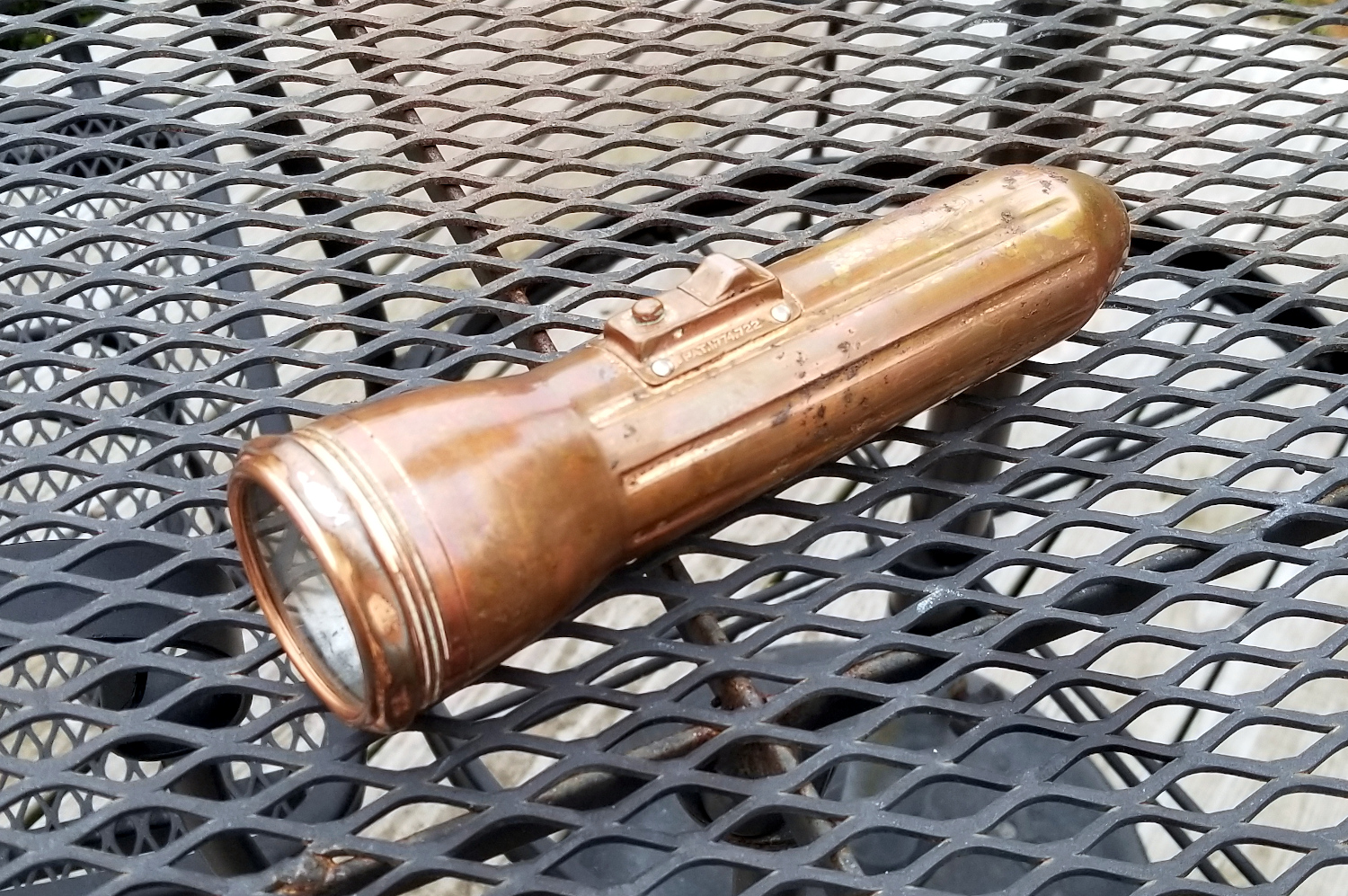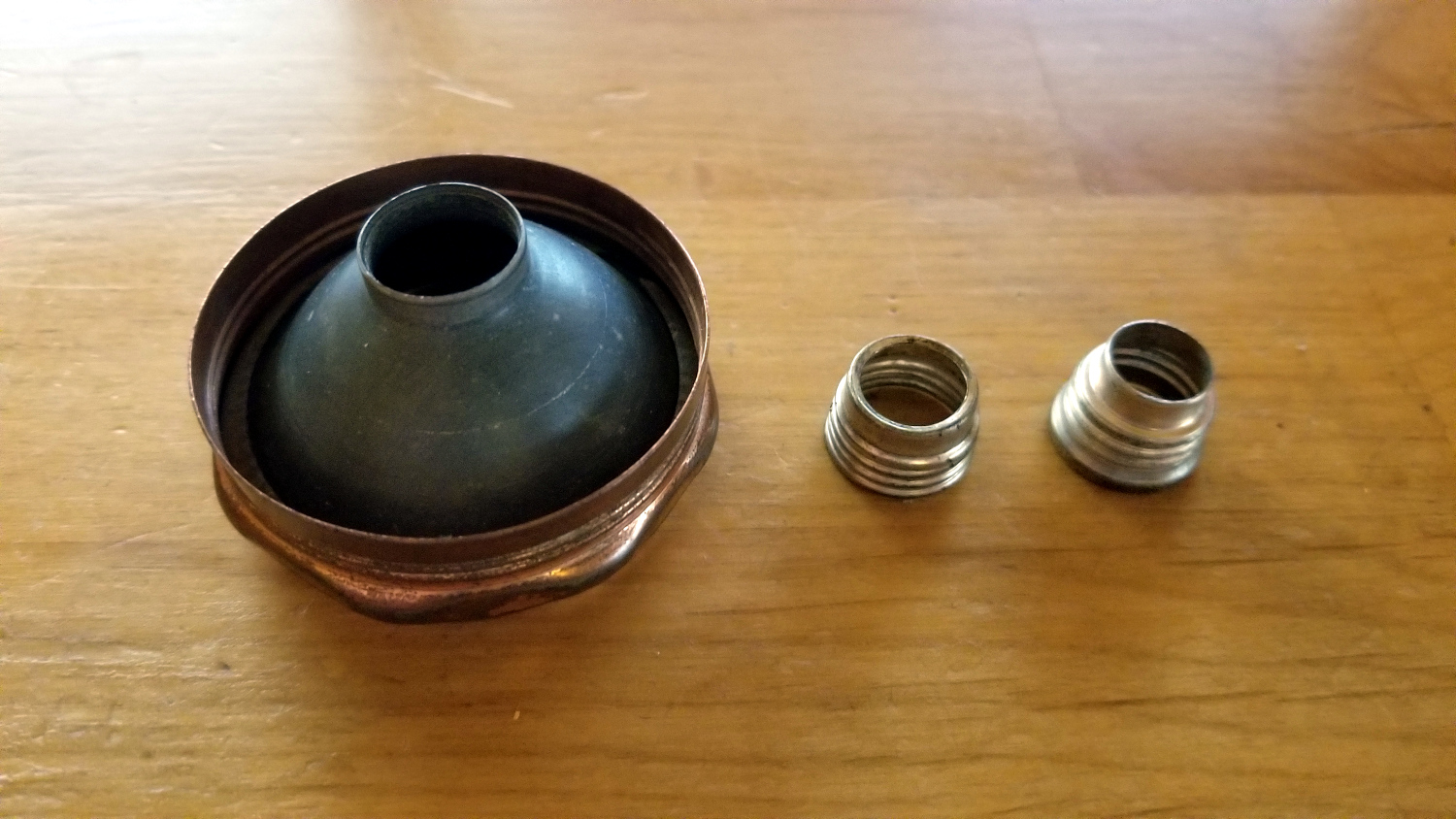Good score. Is it perhaps a (Sears brand) Homart or Tru-spot?
That kind was called "bullet light" due to the shape of the tail. It should have a spring inside the end. Being a bullet shaped tail would mean the OD of the spring would be about the size of a C cell light spring. Springs are not hard to find on the internet or you can make your own using a drill and piano wire. Lots of how to articles for that out there.
Next, the bulb fastener. Some are male, some are female. It depends on the reflector tooling. But the reflector tooling threads should indicate whether it is male or female. Most male were a plastic piece with a spring inside to help isolate shock to the bulb. Female type just threaded over the reflector with a small hole that allowed the tip of the bulb to make contact with the positive end of the battery. Your light used a PR-2 bulb. Not real hard to find on the internet. Kel-Lite dot com has some male bulb fasterners. If yours is a female you can purchase a "small head" reflector set at Kel Lite or search eBay for flashlight parts. If it is the E10 type you are golden. No parts missing as those just threaded into the reflector. Just search for 3 volt E10 bulbs.
The switch is likely sort of like a tongue depressor. It slides forward to make contact with the reflector. Slides away to remove contact. The signaler button presses the switch against the reflector when pushed.
Now the reflector itself should have a collar between the lens and bezel ring. That breaks contact between the light body and reflector. If the collar is missing or damaged the light will always be on when it has batteries in it. I use electrical tape around the collar. It takes a couple of layers. Or you can use duct tape that only takes one layer.
So you have all your parts but the light won't light. Using a multimeter with pins set to check ohms (set to beep) will show you where the break in flow is. Often it's just a dirty contact point. Even a slight amount can cause it to fail. I've had some that appeared pretty clean that had just enough to cut the flow. One thing to know also is the less resistance the brighter the light will be. I've had some that burn a dim orange that read like 17 ohms at first. Cleaning it would result in like 5 ohms and a much brighter output.
Female fastener and C sized spring.
Male fastener and shows collar around reflector
A typical spring
Also shows the tongue depressor style slider switch.
Old lights began with E10 style bulbs. 10mm Edison thread. Eventually they used PR base type. Pre-focused. The male fastener soon followed with it's shock isolating spring but some chose to stay with a female bulb fastener. SureFire and Streamlight used bi-pin bulbs later on.
You can find KPR bulbs (krypton) or HPR (Halogen) bulbs these days. I stick with regular PR bulbs that used argon gas as they have that nice old school glow. Eiko makes nice ones or you can find vintage ones at eBay by US made Tung Sol or Chicago Miniature who made bulbs for cars and radios so they tended to outlast the GE, Phillips and Eveready brands. Osram and Norellco made nice bulbs too. Holland made Norelco and German made Osram were better than bulbs from their other countries of origin.
Best regards.










